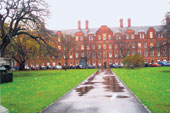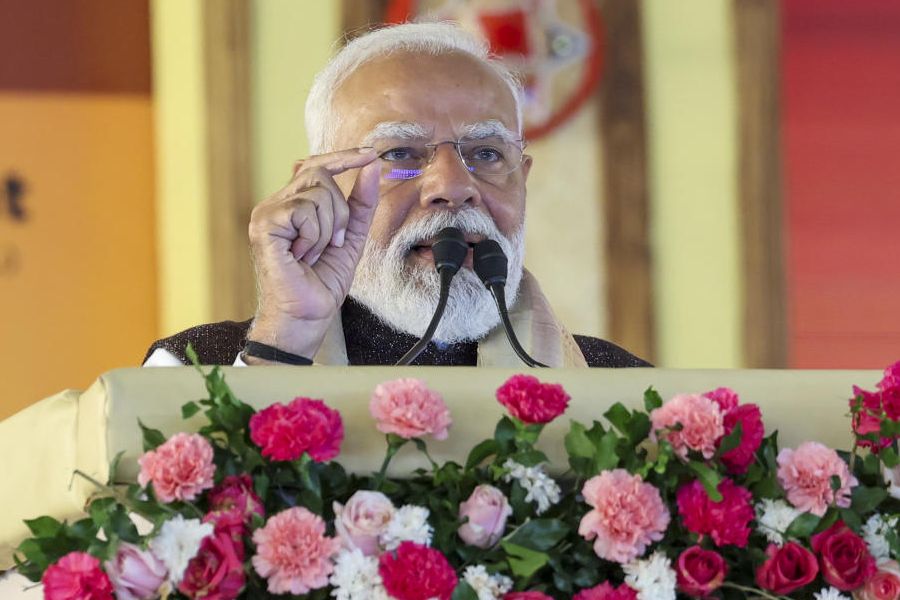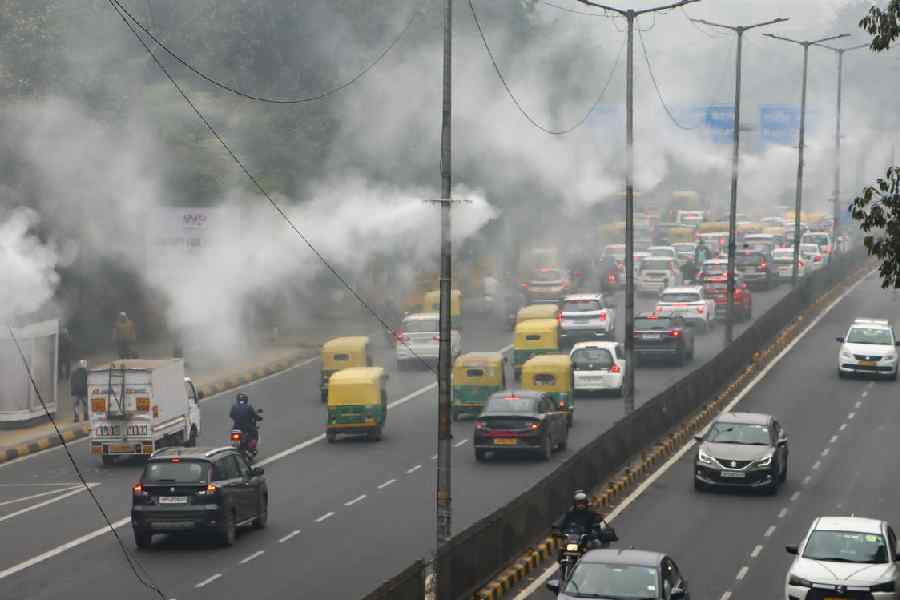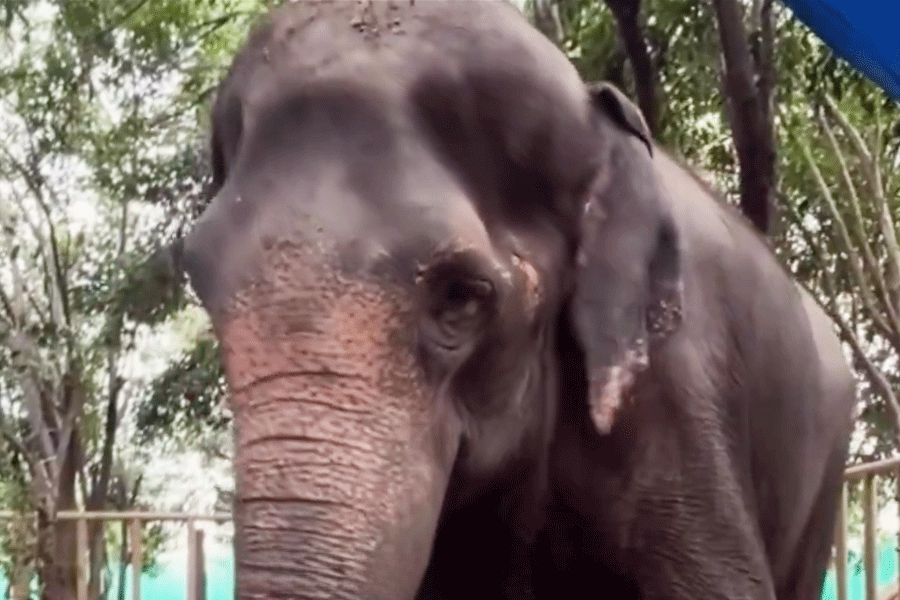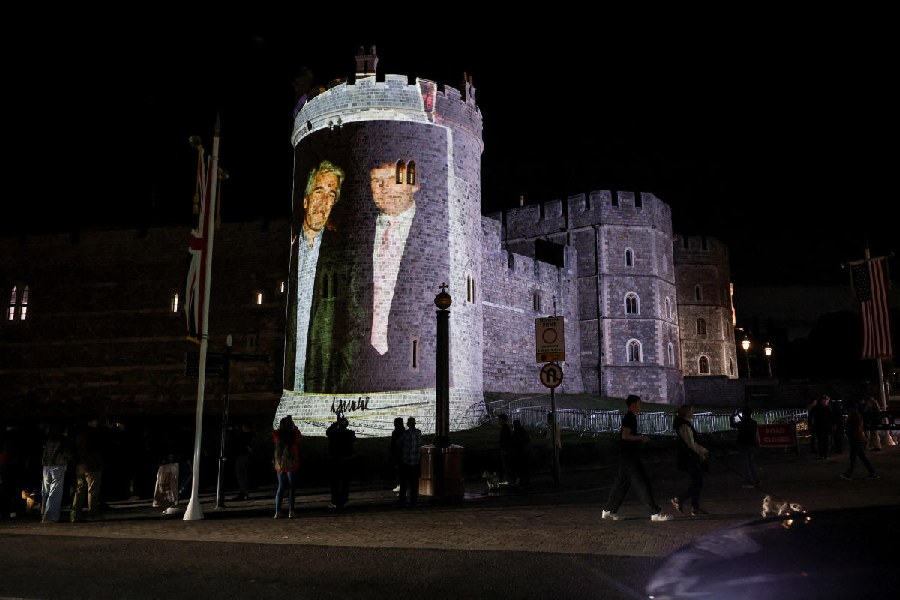 |
 |
 |
 |
 |
| (From top): A view of the Trinity College; the statue of James Joyce; visitors at the Book of Kells Museum; The Book of Kells; the Oscar Wilde statue in the park |
You can’t escape the literary greats of Ireland. I was walking down Merrion Square, enjoying the bracing cold breeze and the crisp sunlight, when I spotted a blue plaque on a redbrick Georgian fa?ade, announcing that this was where Oscar Wilde had been born. Across the road in a park, alive with trees that had still not shed their autumn colours, his lifesize statue reclined rakishly on some rocks, eternally gazing at his birthplace
Dublin is a city for bookworms and lovers of literature. The city is the proud home to no less than four Nobel laureates and many other writers and poets of international renown. After a few days in the Irish capital I began to wonder whether it was something in the air or the water in Dublin that gave so many people the proverbial gift of the gab.
“It’s to do with the Celtic language,” my Dubliner friend Pat said, “the language is so poetic that most Irishmen have a natural facility for writing and poetry!” I didn’t dispute that, the Irish are famous for their blarney...and lots of it. It’s probably no coincidence that there are no words in Celtic for yes and no ? which makes every commonplace acceptance and denial an interestingly wordy affair. But walking around the city was a pleasure, for there are literature-related landmarks to be found all over, some in the most unexpected places.
It seemed a bit ironical that Dublin decided to honour Wilde, because he never returned to the city after his much publicised trial and jail sentence on charges of homosexuality. He went abroad, and famously said at customs, “I’ve nothing to declare except my genius!” Wilde never returned to Dublin, and died in Paris, in a tacky hotel.
Then, there’s James Joyce, and Dubliners celebrate his memory all over the city. “Look, that’s the floozie in the Jacuzzi!” Pat pointed out when we drove through ’Connell Street. I looked around, startled. He pointed to the Anna Livia Millennium Fountain in the centre of the street, based on James Joyce’s character Anna Livia next to the River Liffey.
It was the first of the many nicknames I heard during my visit. The Millennium Spire close by, a tall tower of stainless steel that dominates Dublin’s skyline, is better known as ‘stiletto in the ghetto’, while a statue of Molly Malone, the legendary street trader, on Grafton Street, has been dubbed ‘the tart with a cart’.
Dublin is proud of its literary traditions and has two museums dedicated to Joyce ? the James Joyce Centre (presently closed for renovations) and the James Joyce Museum. The museum is housed in a tower built to withstand an invasion by Napoleon. Joyce set the first chapter of his famous work, Ulysses, here. The gun platform with its panoramic view and the living room inside the tower are pretty much as he described them in his book. And June 16th ? the day during which the events of Ulysses played out ? is celebrated every year in Dublin as Bloomsday, when the story is recreated.
A short walk from ‘the stiletto in the ghetto’ brought us to Abbey Theatre, Ireland’s national theatre founded in 1904 by none other than the poet W B Yeats. Over the next few years the works of Ireland’s greatest Irish playwrights ? J M Synge, W B Yeats, Bernard Shaw, Sean ’Casey and others ? were premiered at the Abbey. It has the reputation of a writer’s theatre, and has been in the forefront of the Irish literary and cultural scene. The play, A Drama in Innish, was a good way to spend the evening, even though the theatre building was disappointingly modern (the original building burnt down decades ago).
Two places that every literature aficionado must make an effort to visit are Trinity College and the Writer’s Museum. Trinity College is the alma mater of most of Dublin’s writers ? Wilde, Beckett, Yeats and Joyce to name some. It’s most famously home to The Book of Kells ? a stunningly illustrated ninth century manuscript and the oldest harp (Ireland’s national symbol) in the country.
The Book of Kells, a medieval gospel manuscript, was probably produced by Irish monks and is illustrated with Celtic motifs. Strolling through the Long Room of the Trinity library with its vaulted ceilings, I saw several first editions, including that of Swift’s Gulliver’s Travels. The stacks of tomes stretched as high as the ceiling ? in fact the ceiling of the Long Room had to be raised in 1860 to accommodate more books.
Dublin’s rich literary heritage came together in the Writer’s Museum on Parnell Square. Set in a restored 18th century Georgian townhouse, it had letters, memorabilia and books on display, ranging from Gulliver’s Travels and Wilde’s The Importance of Being Earnest, Joyce’s Ulysses and Beckett’s Waiting for Godot.
Most of these are first or early editions, some with inscriptions in the writer’s handwriting. I saw one inscribed to Oliver Gogarty (whose descendents still own the famous eponymous pub in Temple Bar) by W.B. Yeats. Some of the letters are fascinating ? there’s an abject note from Sheridan to a creditor; a signed refusal from Bernard Shaw to provide an autograph and Brendan Behan’s postcard from Los Angeles (he described it as ‘a great spot for a quiet piss-up’).
I picked up bits of trivia there. Wilde, it seems, was a promising pugilist during his student days at Trinity. Another Trinity alumnus, Samuel Beckett, was almost as good a cricketer as he was a writer, and played for his college team.
I was pleased to discover that The Writer’s Museum was, apparently, once the residence of George Jameson, one of the family of legendary Irish whiskey distillers. For during my pedestrian sojourns, braving the notorious Irish ‘liquid sunshine’, what kept me warm (and verbose) were frequent shots of hot spiced whiskey. So maybe Dublin’s astonishing depth and variety of writing talent owes some of its triumphs to ... Jameson whiskey and Guinness beer? I’ll drink to that.
In Dublin, the more fashionable side is south of the River Liffey. But there’s also Northside which has had residents in the past century like the writers Sean ’Casey, James Joyce and Brendan Behan, who celebrated their surroundings in their books and plays. Today the area is alive with the variety of Dublin’s culture. Old mansions are being restored; pedestrianisation has created new spaces for street events; new theatres and new horizons in entertainment are opening up. Everywhere there is a characteristic mixture of the old with the new.
Photographs by the author

